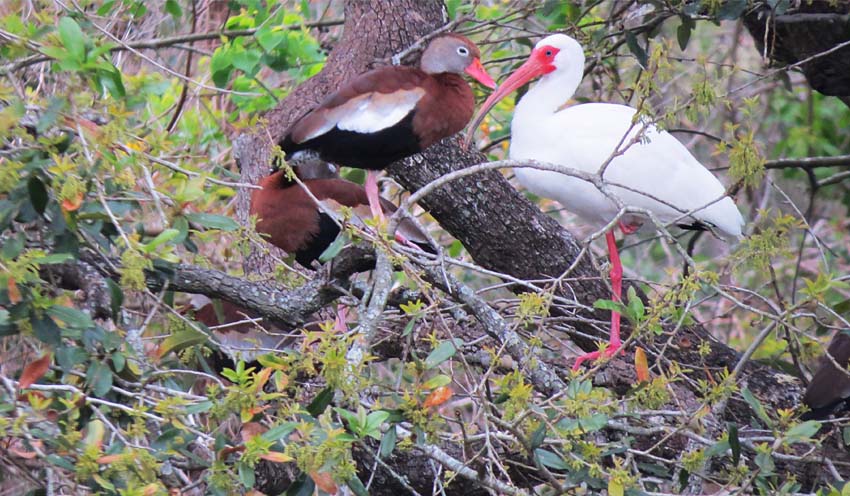
09 Mar Out of our depth in Louisiana
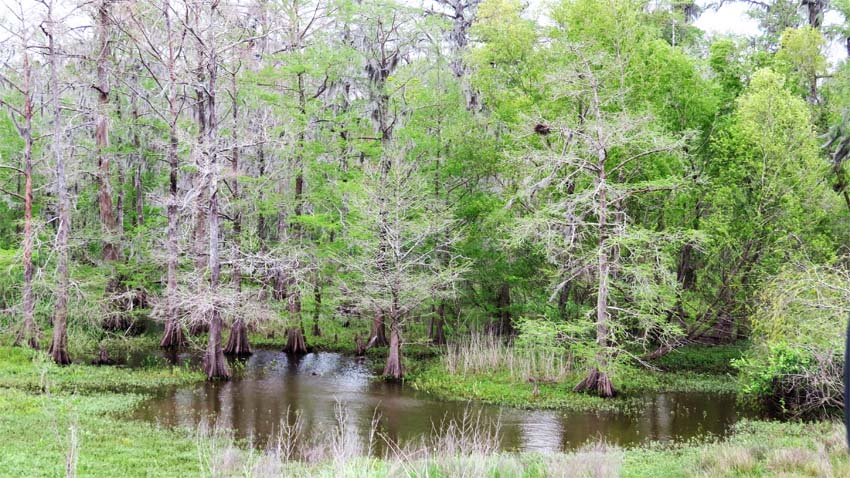 Posted March 8, 2017 from Seattle, WA
Posted March 8, 2017 from Seattle, WA
We went to the wedding of the very wonderful son of long-time friends and his very wonderful fiance in New Orleans. You know you’re old when at 11 pm after dancing all night you’re shocked to see a Party Bus pull up. Does that mean these kids are going to keep going all night? Aren’t they tired?
 We left ourselves a day and two half-days to go birding. Seeing the gorgeous Black-bellied Whistling Duck is easier than falling off a log in Audubon Park in New Orleans. Here’s a shot of one getting along pretty well with a White Ibis.
We left ourselves a day and two half-days to go birding. Seeing the gorgeous Black-bellied Whistling Duck is easier than falling off a log in Audubon Park in New Orleans. Here’s a shot of one getting along pretty well with a White Ibis.
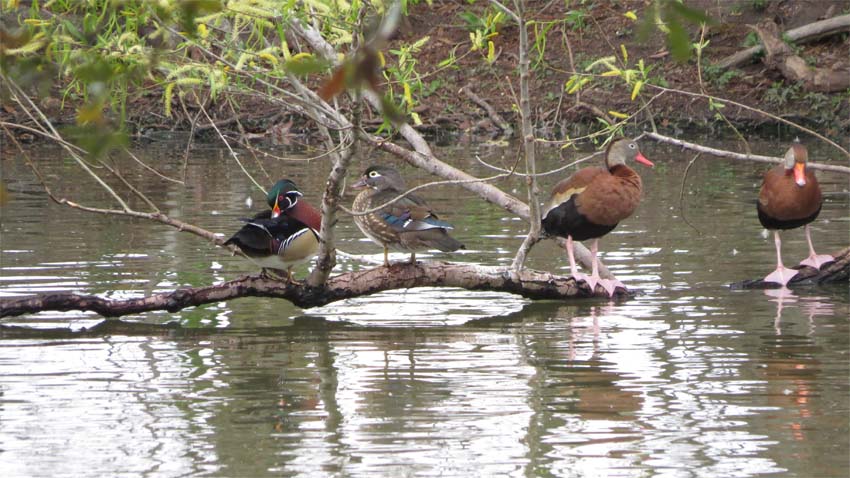 Some Whistling Ducks also posed with Wood Ducks. Everyone wants to get their picture taken with Whistling Ducks. That’s the female Wood Duck with the racing stripe around the eye.
Some Whistling Ducks also posed with Wood Ducks. Everyone wants to get their picture taken with Whistling Ducks. That’s the female Wood Duck with the racing stripe around the eye.
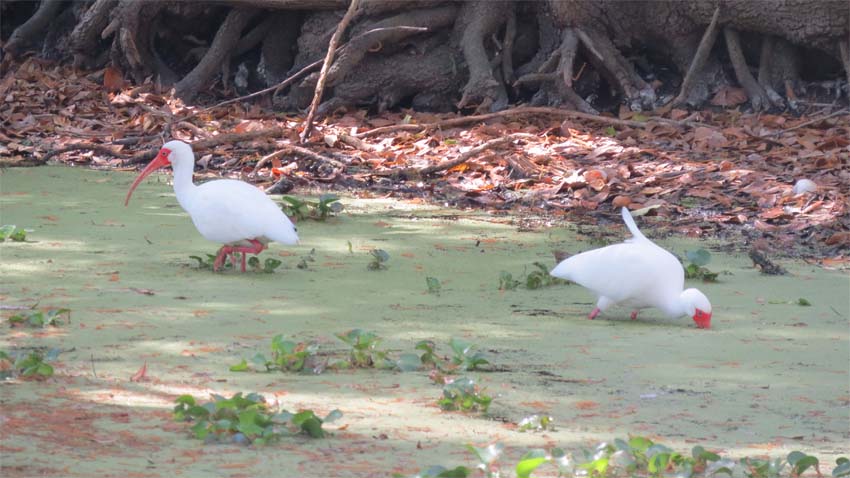 These White Ibis were in City Park.
These White Ibis were in City Park.
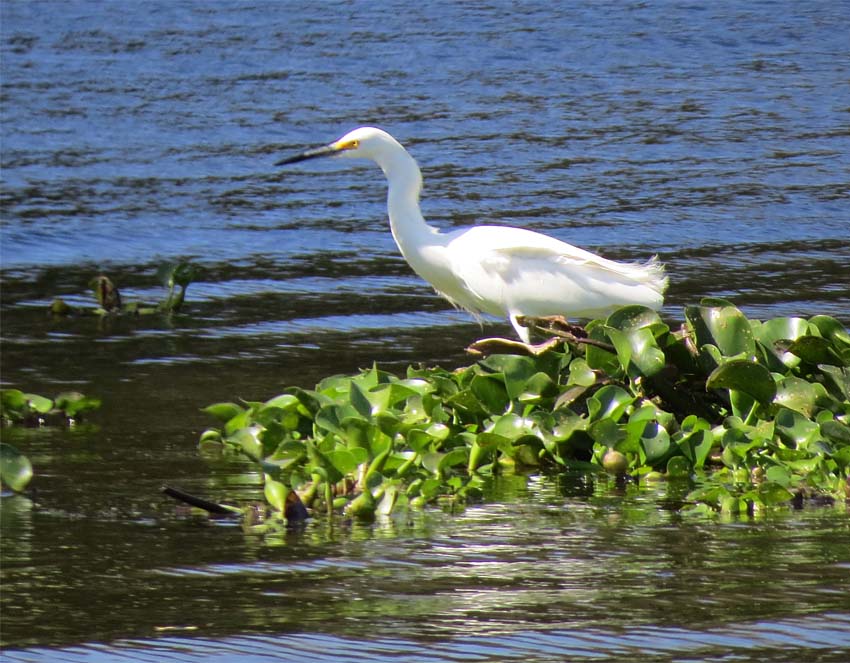 And so was this Snowy Egret.
And so was this Snowy Egret.

That’s a Little Blue Heron behind a very sharp shot of a White Ibis that just happened to be a particularly fuzzy individual. (humor attempt)
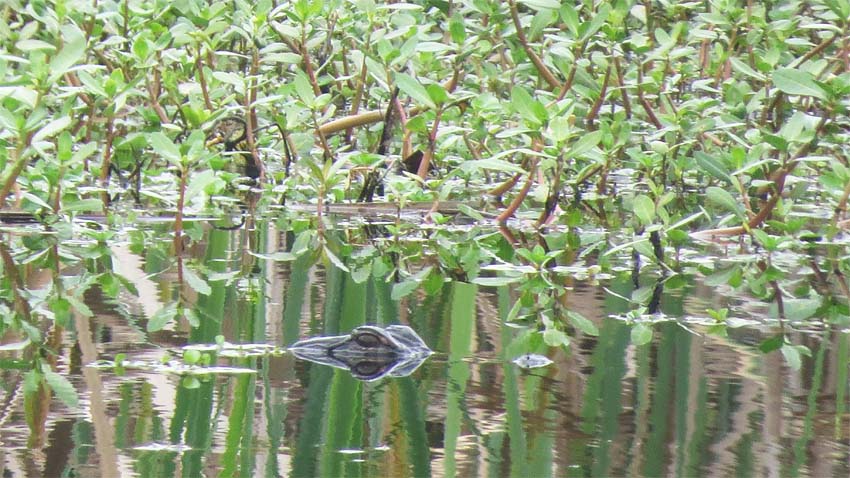 On March 5 we went east to Bayou Sauvage. Delia was able to discern and identify a King Rail, by voice only, which for both of us was a Life-heard bird–you have to see em to call em for a full Life-Bird. She also noticed this Alligator while we were scanning the Gallinules and Coots.
On March 5 we went east to Bayou Sauvage. Delia was able to discern and identify a King Rail, by voice only, which for both of us was a Life-heard bird–you have to see em to call em for a full Life-Bird. She also noticed this Alligator while we were scanning the Gallinules and Coots.
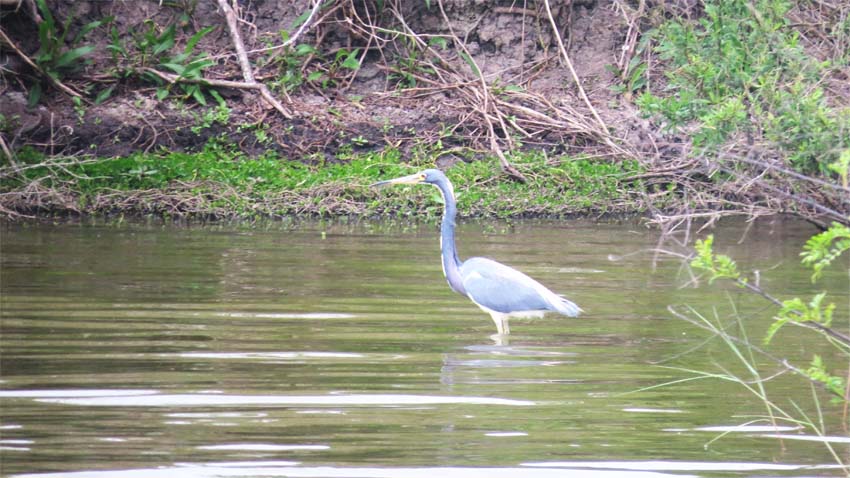 This Tricolored Heron was at the Bayou Sauvage. Most everywhere we went, a few Tree Swallows would be foraging high overhead. We never saw one perched, I don’t think, but that was a really nice touch, Louisiana!
This Tricolored Heron was at the Bayou Sauvage. Most everywhere we went, a few Tree Swallows would be foraging high overhead. We never saw one perched, I don’t think, but that was a really nice touch, Louisiana!
 This Palm Warbler was at the Bayou, along with many Yellow-rumped Warblers. We didn’t find any other eastern Warblers the whole trip, and we missed the White-eyed Vireo, which winters somewhat in Louisiana. We did find some spirited Blue-headed Vireos in New Orleans.
This Palm Warbler was at the Bayou, along with many Yellow-rumped Warblers. We didn’t find any other eastern Warblers the whole trip, and we missed the White-eyed Vireo, which winters somewhat in Louisiana. We did find some spirited Blue-headed Vireos in New Orleans.
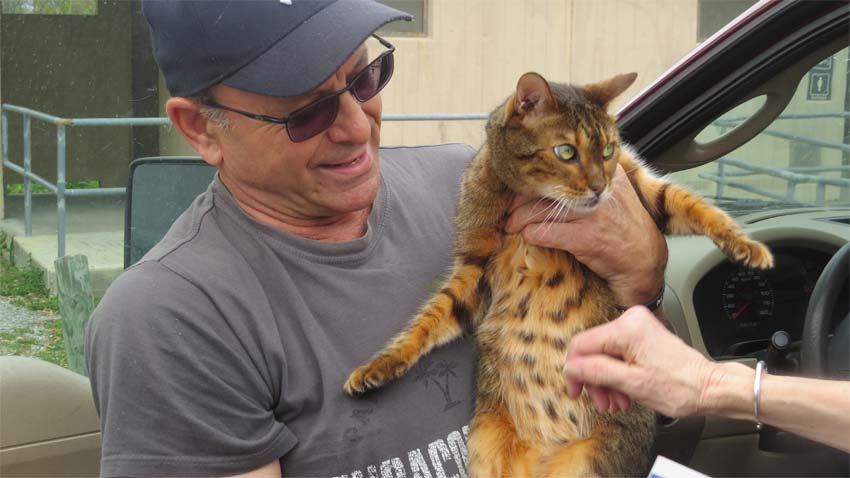
At the Bayou we met John Calzada, a 4th-generation Louisianan and a general contractor who was casing out the Crawdads. “Cats find me,” he said as he showed us this rather stunning individual who was lounging in the front seat of his pickup with another cat that we didn’t meet.
 We went over to a big Corps of Engineer project, the Bonnet Carre spillway on March 6. A very nice local person noticed my attempt at pronouncing it and helped me a lot with that (bonney carry). The wind had kicked up, some Pipeline workers eminent-domained us out of the best access point to the hardwood forest, but some birders from a local university class pointed us to some ponds along the river that were infested with Bald Eagles. (I mean that nicely of course). But first, we found this Great Egret, one of many in LA, in the Bonnet Carre.
We went over to a big Corps of Engineer project, the Bonnet Carre spillway on March 6. A very nice local person noticed my attempt at pronouncing it and helped me a lot with that (bonney carry). The wind had kicked up, some Pipeline workers eminent-domained us out of the best access point to the hardwood forest, but some birders from a local university class pointed us to some ponds along the river that were infested with Bald Eagles. (I mean that nicely of course). But first, we found this Great Egret, one of many in LA, in the Bonnet Carre.
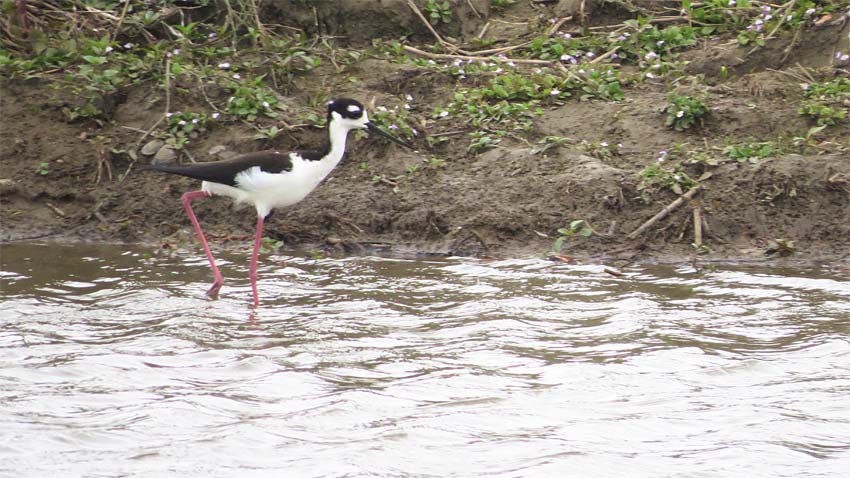 And this Black-necked Stilt.
And this Black-necked Stilt.
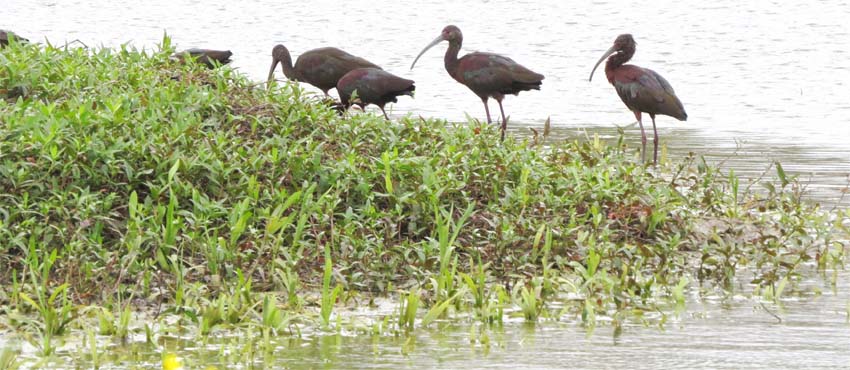 And these Glossy Ibis. (Or so we thought and originally posted. However, a sharp-eyed Tweeter reader, Matt Dufort, has posted me to say that the red eye means it is actually the western species, White-faced Ibis.
And these Glossy Ibis. (Or so we thought and originally posted. However, a sharp-eyed Tweeter reader, Matt Dufort, has posted me to say that the red eye means it is actually the western species, White-faced Ibis.
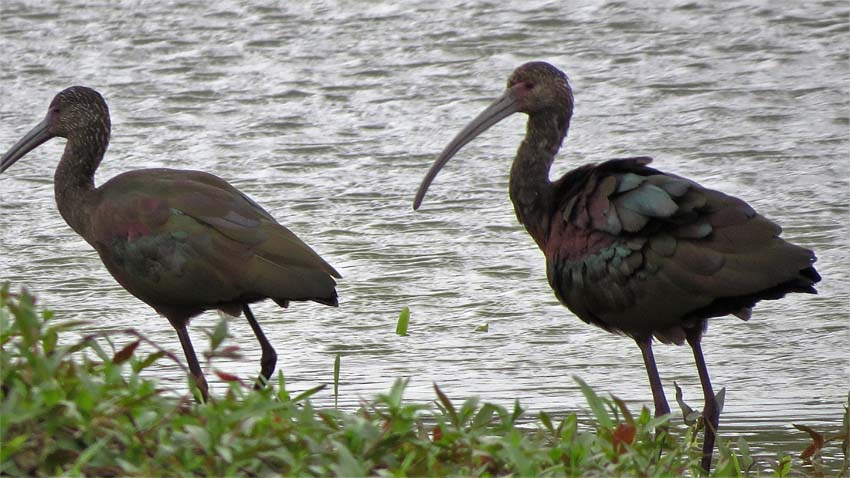
Here is another shot of two of these birds, which I am adding to this post and will run by Matt to get his final opinion. But we stand corrected, these are White-faced Ibis.
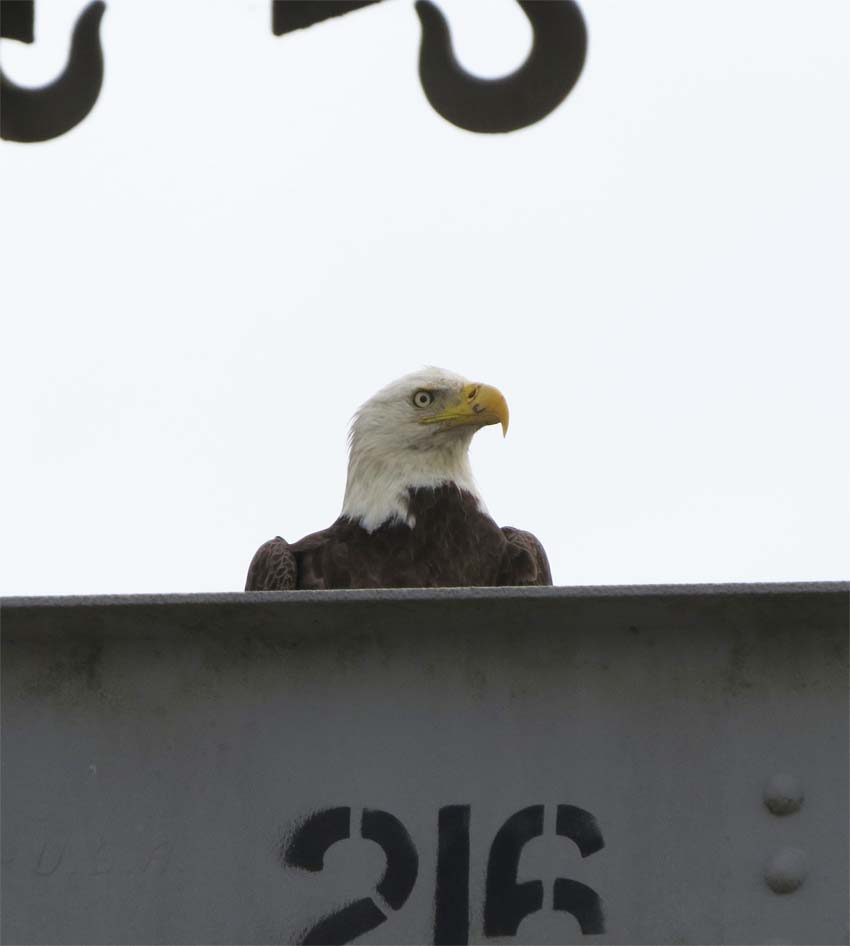 I have a specialty interest in photographs that wouldn’t make good ideas for paintings because they defy normal expectations. It looks like she’s about to give a speech. This extremely good-looking Bald Eagle (other shots of her make even more apparent her “Roman Nose” look, characteristic of the female) was on the floodgate of the spillway.
I have a specialty interest in photographs that wouldn’t make good ideas for paintings because they defy normal expectations. It looks like she’s about to give a speech. This extremely good-looking Bald Eagle (other shots of her make even more apparent her “Roman Nose” look, characteristic of the female) was on the floodgate of the spillway.
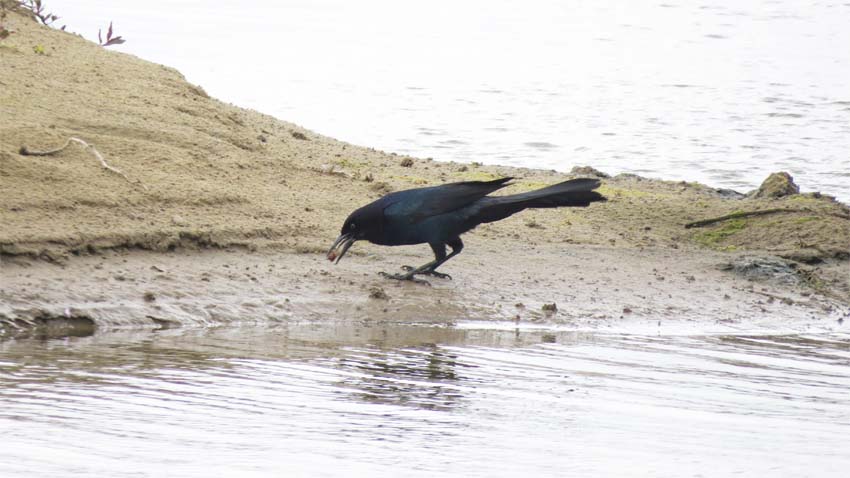 Boat-tailed Grackles were fairly common in the wetlands.
Boat-tailed Grackles were fairly common in the wetlands.
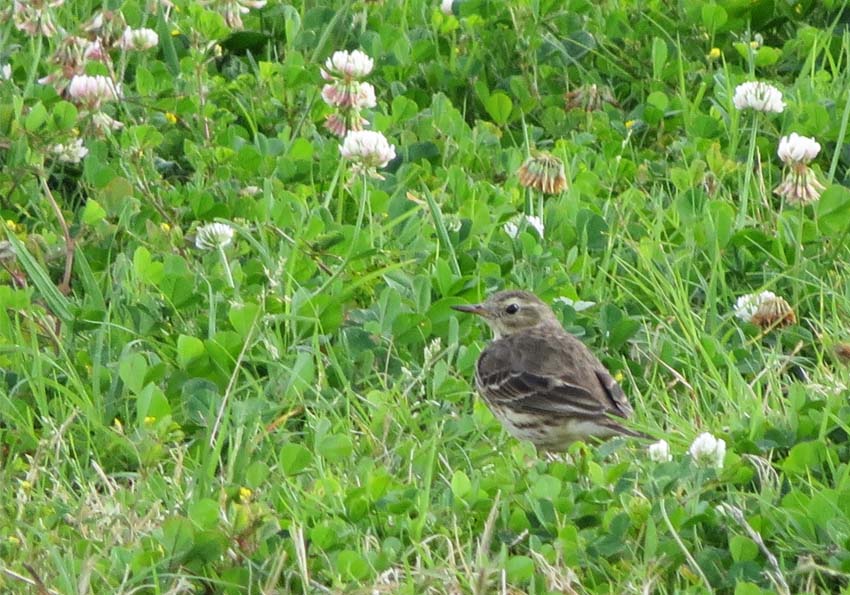 This was one of a few American Pipits we found on the levy by the river in New Orleans.
This was one of a few American Pipits we found on the levy by the river in New Orleans.
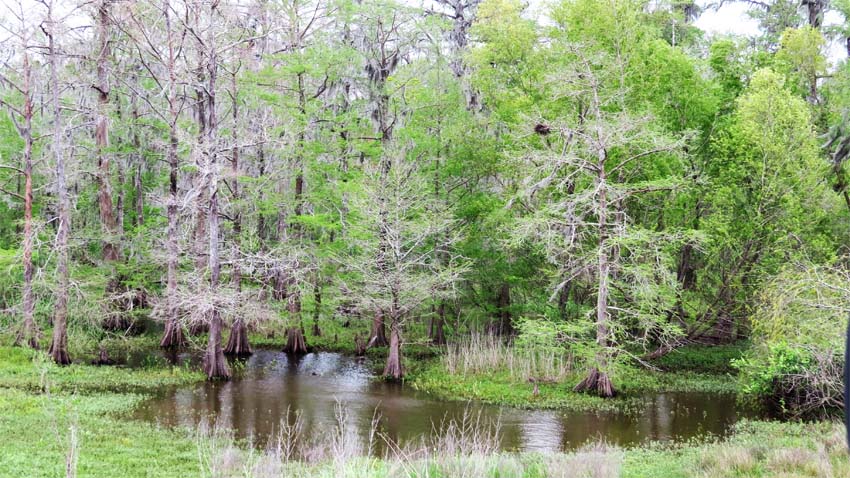 A forest in the Bonnet Carre Spillway. We were out of our depth in Louisiana. We only found 85 species of birds, and couldn’t get a grip on what’s going on. To me it’s a testimonial of the value of having a local guide, which we didn’t. Katrina’s presence was everywhere. It was hard to sort out what’s normal for winter in Louisiana and normal variation versus the signs of the 6th Extinction and climate-forcing, but then, isn’t it always? Louisiana has an immediate problem, though, in that it’s washing away. John Calzada’s great great grandmother was given an 18,000 acre land grant, but of that, 16,000 acres is now the Gulf of Mexico. All this of course was caused by an Army Corps of Engineers program to divert the Mississippi River away from the bayous, where the welcome silt the river used to deliver was always needed to constantly rebuild the land. Sure I’m firmly on the left side of the values spectrum, but Ronald Reagan’s words ring loud in my ears when I think of Louisiana’s bayous: “Government doesn’t solve problems, it subsidizes them.” Now there is more enlightenment about this from the bureaucracies and the politicians, but it is tenous and the new status quo brings new winners and losers whenever any reversal of old bad policy is attempted. Calzada, who we met by chance I should emphasize, wasn’t optimistic that there would be any significant improvement in our lifetime, “It will take hundreds of years, if ever, to build it back,” he speculated.
A forest in the Bonnet Carre Spillway. We were out of our depth in Louisiana. We only found 85 species of birds, and couldn’t get a grip on what’s going on. To me it’s a testimonial of the value of having a local guide, which we didn’t. Katrina’s presence was everywhere. It was hard to sort out what’s normal for winter in Louisiana and normal variation versus the signs of the 6th Extinction and climate-forcing, but then, isn’t it always? Louisiana has an immediate problem, though, in that it’s washing away. John Calzada’s great great grandmother was given an 18,000 acre land grant, but of that, 16,000 acres is now the Gulf of Mexico. All this of course was caused by an Army Corps of Engineers program to divert the Mississippi River away from the bayous, where the welcome silt the river used to deliver was always needed to constantly rebuild the land. Sure I’m firmly on the left side of the values spectrum, but Ronald Reagan’s words ring loud in my ears when I think of Louisiana’s bayous: “Government doesn’t solve problems, it subsidizes them.” Now there is more enlightenment about this from the bureaucracies and the politicians, but it is tenous and the new status quo brings new winners and losers whenever any reversal of old bad policy is attempted. Calzada, who we met by chance I should emphasize, wasn’t optimistic that there would be any significant improvement in our lifetime, “It will take hundreds of years, if ever, to build it back,” he speculated.

Here a White Ibis forages in City Park, New Orleans. It didn’t rain while we were there, luckily for the ceremony, but which began to make me cranky. Water levels were down, even though New Orleans is not listed as in a drought right now. The Crawdads build mud chimneys, which scientists think is for heat and moisture regulation, and when it’s dry, the Crawdads add a mud-plug at the top of the chimney to keep what moisture that is there from evaporating. We saw the plugs, and we read all the warnings about wet muddy roads in the winter when our bigger problem was dust. Not to get on a high horse about this. We rode a jet down there, and then drove a rental car, contributing to Climate forcing, and we were subsidized in many ways in doing this. Of course it’s possible that the new head of the EPA is right and Carbon is not involved, which would make us perfect innocents. I’ll keep an open mind forever, but I kind of doubt his interest in the issue is anything other than ideological.
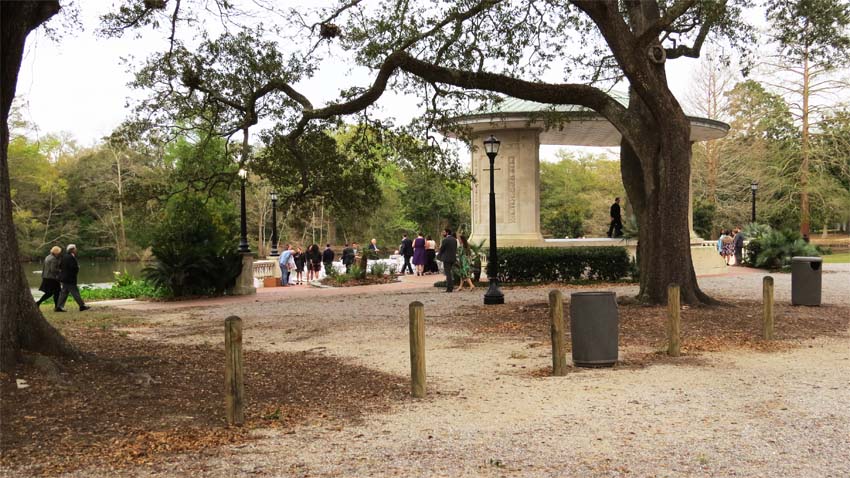 But enough dreary politics in which I have given everyone something to dispute or at least nuance. New Orleans provided a beautiful backdrop for a wedding, with the Whistling Ducks partying even through the vows. How do weddings bring out such inspired humorists and speakers? And how emotional to see such a fine pair embarking on a life together! I’m tearing up just trying to write about it. I took no pictures except this one of the venue an hour before the wedding.
But enough dreary politics in which I have given everyone something to dispute or at least nuance. New Orleans provided a beautiful backdrop for a wedding, with the Whistling Ducks partying even through the vows. How do weddings bring out such inspired humorists and speakers? And how emotional to see such a fine pair embarking on a life together! I’m tearing up just trying to write about it. I took no pictures except this one of the venue an hour before the wedding.
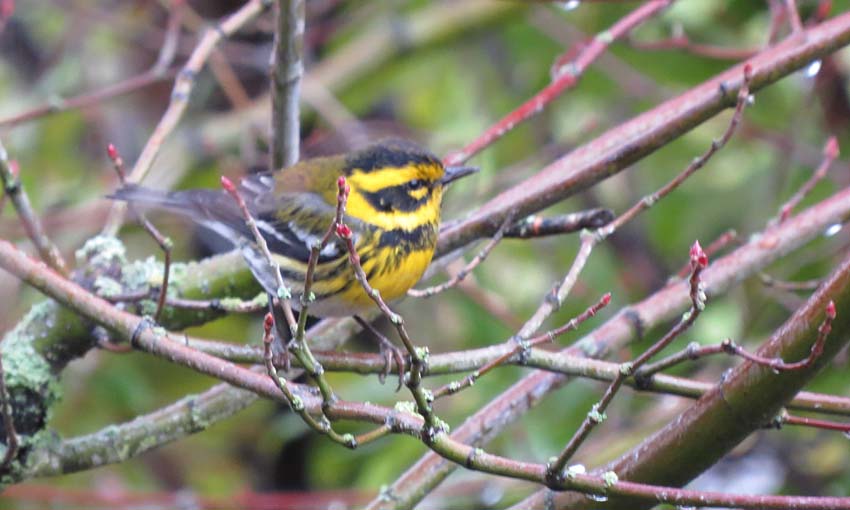
On the flight back our route coursed over West Texas at night and we could look down on bright orange fires as far as the eye could see. Back in Seattle, we’ve been surprised to see a cold rain. Well, not that surprised. Our Townsend’s Warbler is doing fine, but we are looking in vain for any Ibis or Whistling Ducks.
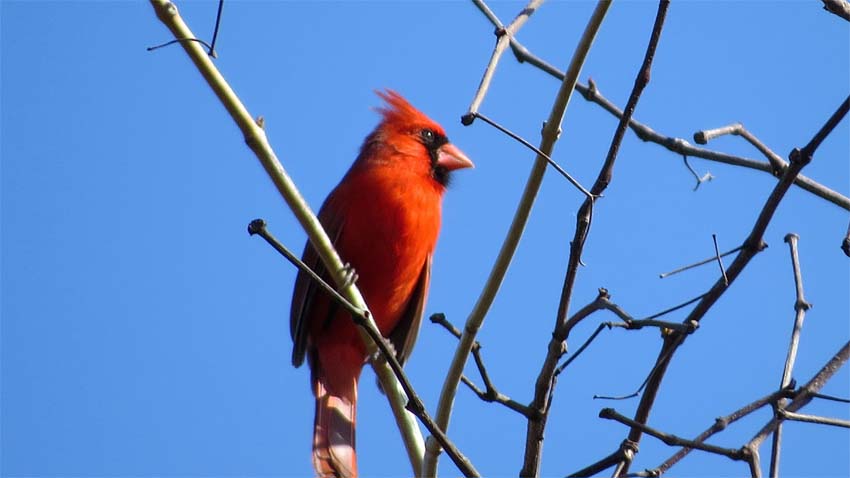 And here’s one last shot from NOLA: Northern Cardinals were ubiquitous and that’s always a delight.
And here’s one last shot from NOLA: Northern Cardinals were ubiquitous and that’s always a delight.

Sorry, the comment form is closed at this time.